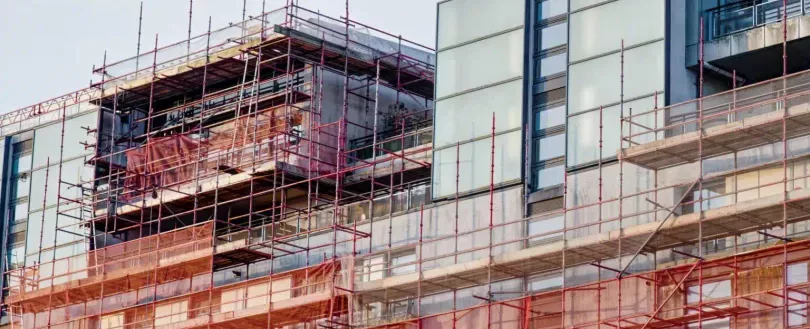
Revised European Cladding Fire Safety Standard to Take Effect January 2026
Like it? Share it!
27 August 2025
A revised European standard for cladding fire testing will take effect on 31st January 2026.
According to The Danish Institute of Fire and Security (DBI) the updated method will replace the current system of visual fire test assessments with a temperature-based approach.
DBI explained that cladding products, such as plasterboards and wooden panels, must protect underlying materials when exposed to fire. At present, testing relies on visual checks for signs of charring on materials like particleboard, which DBI noted can lead to inconsistent results between laboratories.
Jeanne B. Kirk, Resistance to Fire Engineer at DBI, commented:
“It can be a bit subjective and cause variations from lab to lab. Disagreements often arise in borderline cases.”
Temperature-based pass or fail system
Under the revised approach, pass or fail will be determined by recorded temperatures, with a threshold of 270°C.
DBI has been directly involved in designing sensor placement to ensure accurate assessment of whether underlying materials risk becoming charred.
Kirk explained:
“It’s about getting data sets that show how the material actually performs.
If the temperature exceeds the limit, it automatically fails.
This makes the conclusion much more objective.”
Adjustments to European classification system
Cladding in Europe is currently classified under K1 10 and K2 30 standards, representing protection for 10 and 30 minutes. DBI confirmed that the revision expands how these classes are documented, helping prevent products being approved for unsuitable applications.
The new rules also redefine application areas, requiring results to reflect the intended use. Three test substrates will now be used: expanded polystyrene (EPS), low-density materials such as insulation, and particleboard.
Kirk clarified:
“If you test on EPS, which is considered the worst-case scenario, you are allowed to install your cladding on anything.
But if you test on insulation, you can only install it on similar low-density materials.
In both cases, the installation method must be the same as in the test.”
Flexibility for manufacturers in testing
The revision will provide greater flexibility for manufacturers. For example, plasterboard producers previously required separate tests for each substrate type. Now, a single test on EPS will cover multiple substrate types including cellulose, seagrass, PIR, and PUR – reducing duplication.
Flexibility will also be introduced in fastening methods.
Kirk said:
“A lot of people ask why they can’t just test it as a wall – because that’s how it’s actually installed in practice.
Now this will be possible, but then of course it can only be used as wall cladding.”
She added:
“If you test with nails, you will in the future be allowed to use screws in practice – something that was previously not possible without a separate test or an assessment in the European classification system.”
Incorporating bio-based materials
The revision will also make it easier to incorporate bio-based materials in construction. Currently, each product and manufacturer must be tested individually. Under the new system, switching between suppliers will be permitted, provided the materials are of the same type and equivalent properties.
Kirk explained:
“As it stands, you can’t change anything – not thickness, not density, not manufacturer.
Now we’ll have a standard method that allows switching within the same type.”
Timeline and industry preparation
DBI confirmed that the revised standard has been in development for seven years and will apply from 31st January 2026.
The institute advises manufacturers to begin preparing now.
Kirk noted:
“When you plan a fire test, it typically takes several months.
So if you start now, you’ll be ready when the standard will come into effect.
And you already know what you need to test for.”
Relevance for fire and safety professionals
The new cladding fire test standard will reshape how materials are assessed for fire protection across Europe.
- Fire engineers will need to adapt to temperature-based testing.
- Regulators and testing bodies will apply the revised classification system.
- Fire safety professionals specifying or inspecting cladding will need to consider the new substrate-based approach and documentation requirements.
Summary
- Revised European cladding fire test standard comes into force on 31st January 2026.
- Visual assessments will be replaced by a temperature-based system with a 270°C threshold.
- DBI contributed to the design of sensor placement.
- Updated documentation rules for K1 10 and K2 30 classifications.
- New standard test substrates: EPS, low-density insulation, particleboard.
- EPS testing will cover multiple substrate types.
- Wall-mounted testing and flexible fastening methods will be introduced.
- Easier incorporation of bio-based materials, with supplier switching permitted.
- Standard has been in development for seven years.
- Manufacturers should start preparing test procedures now.
View the source.
Our eNews provides regular insight into industry trends, news headlines, and product and service information. For more articles like this Subscribe to our enews.
Related news
Related resources
-
Passenger Service Vehicle - Guidance Note
05 September 2023
